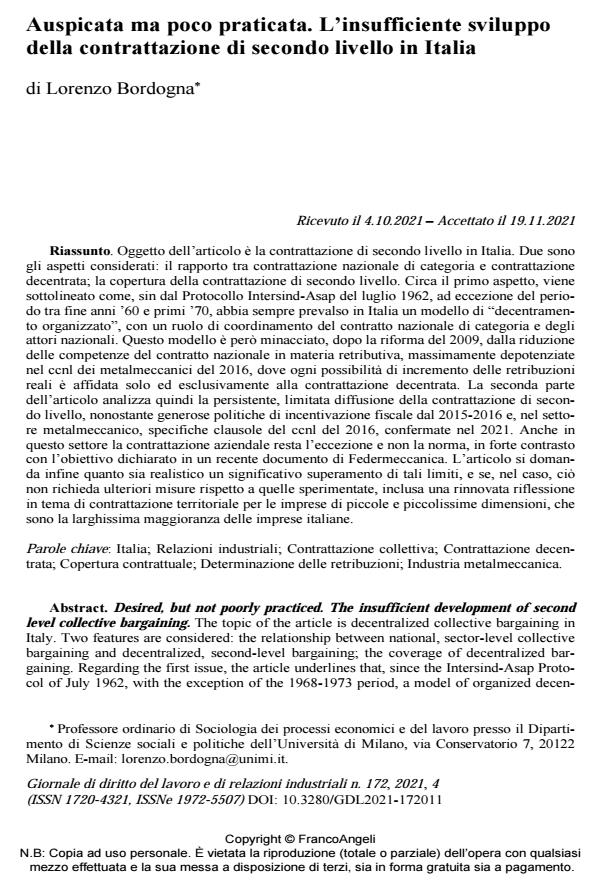Desired, but not poorly practiced. The insufficient development of second level collective bargaining.
Journal title GIORNALE DI DIRITTO DEL LAVORO E DI RELAZIONI INDUSTRIALI
Author/s Lorenzo Bordogna
Publishing Year 2022 Issue 2021/172
Language Italian Pages 19 P. 665-683 File size 245 KB
DOI 10.3280/GDL2021-172011
DOI is like a bar code for intellectual property: to have more infomation
click here
Below, you can see the article first page
If you want to buy this article in PDF format, you can do it, following the instructions to buy download credits

FrancoAngeli is member of Publishers International Linking Association, Inc (PILA), a not-for-profit association which run the CrossRef service enabling links to and from online scholarly content.
The topic of the article is decentralized collective bargaining in Italy. Two features are consid-ered: the relationship between national, sector-level collective bargaining and decentralized, second-level bargaining; the coverage of decentralized bargaining. Regarding the first issue, the article underlines that, since the Intersind-Asap Protocol of July 1962, with the exception of the 1968-1973 period, a model of organized decentralization has always prevailed, with a role of coordination played by the national, sector-level collective agreement (ccnl) and the na-tional actors. After the 2009 reform, however, this model is threatened by the reduced regula-tory role of national sectoral bargaining on wage issues, further drastically weakened by the 2016 metalworking national collective agreement, which leaves any possibility of real wage increase only and exclusively to negotiations at company level. The second part of the article analyzes the persistent, limited coverage of decentralized bargaining despite generous tax in-centives introduced since 2015-2016 and, in the metalworking sector, specific clauses included in the 2016 ccnl, confirmed in the 2021 contract renewal. Even in this sector, company level bargaining remains the exception and not the rule, in sharp contrast with the aim stated in a recent Federmeccanica document. The article finally raises the question whether a significant overcoming of these limits can be realistically achieved, and whether, in case, this would not require further measures in addition to those already adopted, including a reconsideration of the issue of territorial bargaining for small and very small enterprises, which are the large ma-jority in the Italian economy.
Keywords: Italy; Industrial Relations; Collective Bargaining; Decentralized Bargaining; Bar-gaining Coverage; Wage Determination; Metalworking Industry.
Lorenzo Bordogna, Auspicata ma poco praticata. L’insufficiente sviluppo della contrattazione di secondo livello in Italia in "GIORNALE DI DIRITTO DEL LAVORO E DI RELAZIONI INDUSTRIALI " 172/2021, pp 665-683, DOI: 10.3280/GDL2021-172011